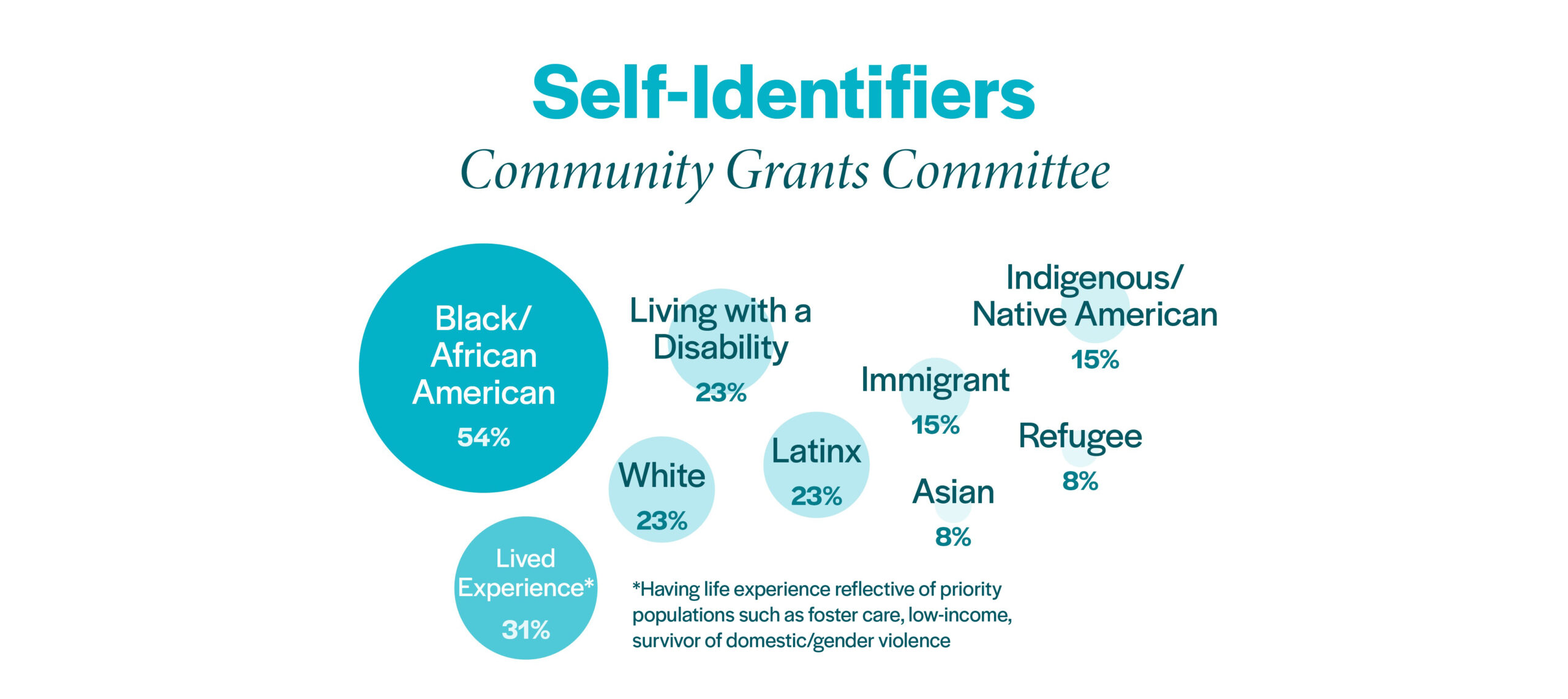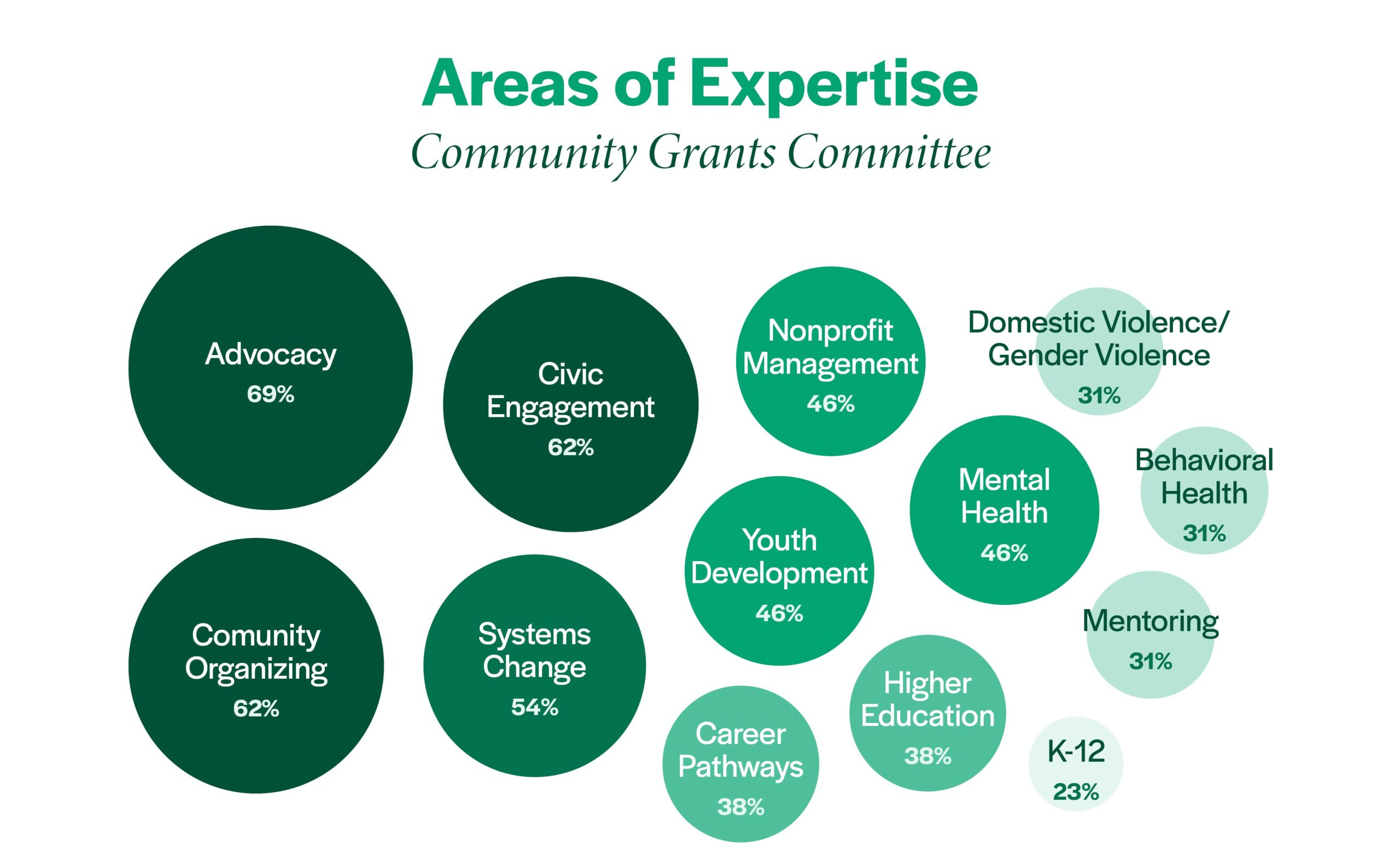As a field, philanthropy is in a moment of deep reflection. Funders are examining internal structures, policies and practices to create more equitable approaches. Participatory grantmaking is one concept emerging from this work, and for good reason.
Our Focus Grant Program awards more than $1 million each year. While significant, the pool of declined proposals is often two to three times greater than our available funding. Determining which of these projects and programs to support with our limited funding is a challenging process. The fact that the communities closest to the problems we aim to solve have had little to no input on funding decisions has made it even more complicated. Participatory grantmaking originated to address this longstanding dynamic and has improved our grantmaking considerably.
What is Participatory Grantmaking?
There are many models or ways to implement participatory grantmaking practices, which makes it hard to define. My favorite summary comes from a GrantCraft guide titled, “Deciding Together: Shifting Power and Resources Through Participatory Grantmaking” (English / Spanish).
“Participatory grantmaking cedes power about funding decisions—including the strategy and criteria behind those decisions—to the very communities that a foundation aims to serve.”
In essence, it means letting our communities lead the way.
Sharing Power with Community Members
The Community Foundation is making a concerted effort to shift power in a few ways. Our program team has been leading efforts on the grantmaking front. Here, we’ve been building a more robust Community Grants Committee that reflects our communities. Today, it has grown to involve around 15 residents. Together, they provide a wealth of lived experience and expertise with the impact areas in our Grantmaking Framework.


The committee includes professionals in fields like behavioral health, housing and education. Some bring experience with community organizing and advocacy. Others are living with disabilities or low incomes. The committee also features diverse demographics. We have members who identify as Black, Native American and LGBTQIA2S+ among others. This all took time and intention.
But diversity and inclusion are nothing without decision-making authority. In our case, we share power by co-creating the grantmaking criteria with our Community Grants Committee and giving committee members a majority say in decision-making. We arrive at decisions through a modified consensus process that utilizes a racial equity lens every step of the way.
Reasons for Creating a Participatory Process
This shift has brought improved decision-making to our grant funding. It also provides valuable information for nonprofits because our committee members are incredibly knowledgeable. We compile their feedback and share these insights with each applicant. In turn, this helps nonprofits develop better programs, driving greater impact for everyone. There are also other valuable benefits found through participatory grantmaking practices:
- Transparency: This approach helps us uphold our values and responsibilities surrounding accountability, transparency, and collaboration. In addition, the process familiarizes committee members with our mission and operations.
- Knowledge Sharing: Staff and committee members strengthen their knowledge around grantmaking and community needs. This travels back to neighborhoods and workplaces, increasing community engagement and understanding.
- Relationship Building: Trust is the basis for any relationship. The inclusive approach of participatory grantmaking helps build that foundation. From here, connections between our staff, local communities and grantees grow.
- Collaboration: Networking and collaboration are a natural outgrowth of working in a group. With proactive steps, we can even foster these opportunities between members who may not otherwise interact.
- Responsiveness: We design regular assessments into the process. These checkpoints enable us to better understand and adapt to changing needs and opportunities. The extra feedback also adds flexibility and innovation to our program delivery.
Integrating Participatory Practices
Designing a participatory grantmaking process is an ongoing practice. It requires us to stay conscious of power dynamics, equity and transparency. Most of all it means letting go of our privilege and power. In this way, the concept is also applicable to every part of our organizations and lives.
From my experience, I’ve learned new things about communities I’m already engaged with. I’ve found new opportunities for partnership and improvement within our programs. I’ve grown closer to people who care deeply about this place and the people who live here.
Candid offers a great library of resources for donors and funders interested in continuing along the path of participatory grantmaking. There is also an online community to tap into. Participatory Grantmakers is a group of 600 individuals and funders that share resources and best practices. I’m always up for diving deeper into the topic too, so please reach out anytime.
